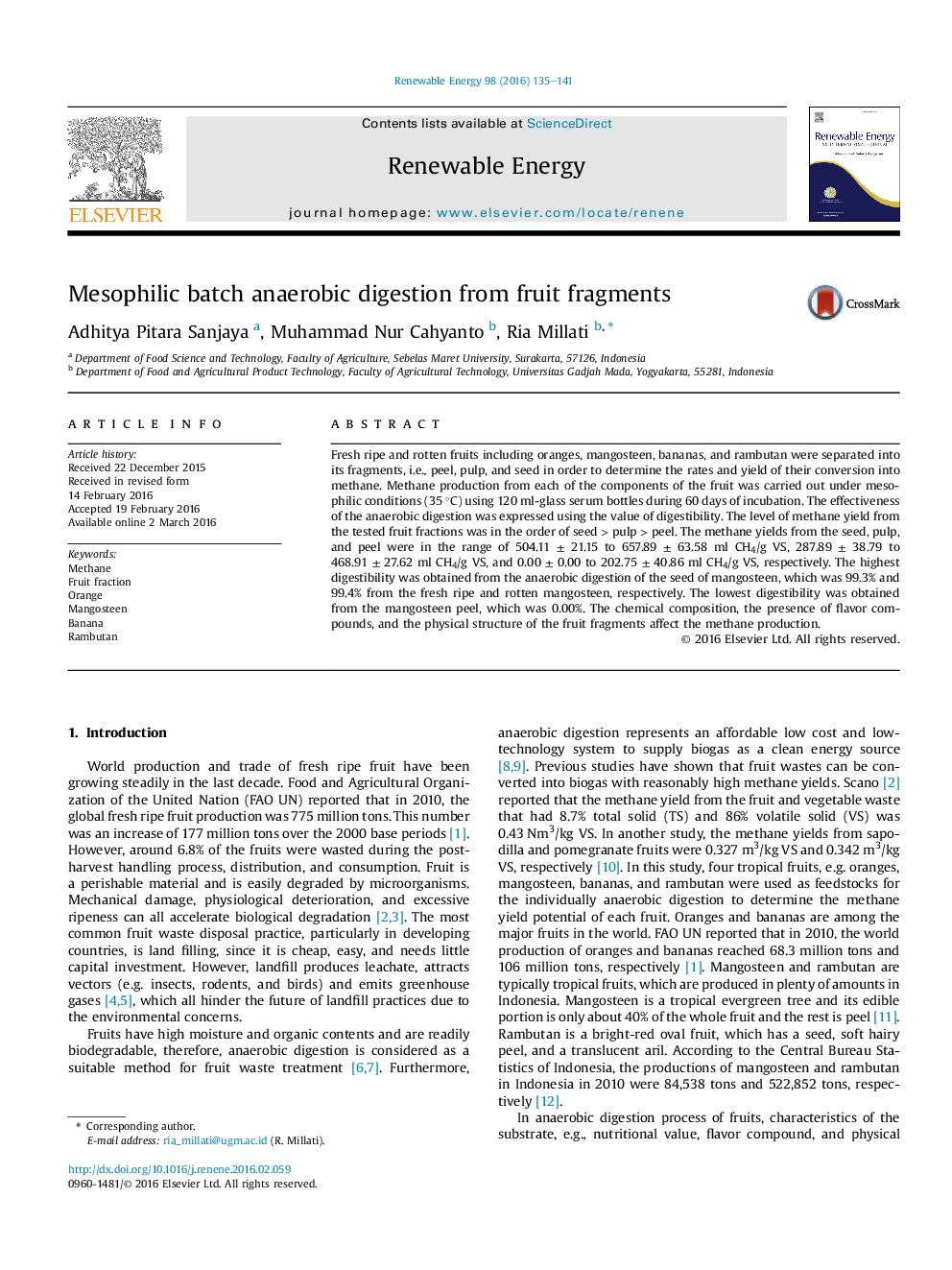| Article ID | Journal | Published Year | Pages | File Type |
|---|---|---|---|---|
| 299655 | Renewable Energy | 2016 | 7 Pages |
•Fruit fragments from fresh ripe and rotten fruits was anaerobically digested.•The highest methane yield was achieved by fresh ripe and rotten mangosteen seed.•Peels of oranges and rotten rambutan resulted in a low methane production.•Peels of mangosteen resulted in no methane production.•The methane yield from the fruit fragments was in the order of seed > pulp > peel.
Fresh ripe and rotten fruits including oranges, mangosteen, bananas, and rambutan were separated into its fragments, i.e., peel, pulp, and seed in order to determine the rates and yield of their conversion into methane. Methane production from each of the components of the fruit was carried out under mesophilic conditions (35 °C) using 120 ml-glass serum bottles during 60 days of incubation. The effectiveness of the anaerobic digestion was expressed using the value of digestibility. The level of methane yield from the tested fruit fractions was in the order of seed > pulp > peel. The methane yields from the seed, pulp, and peel were in the range of 504.11 ± 21.15 to 657.89 ± 63.58 ml CH4/g VS, 287.89 ± 38.79 to 468.91 ± 27.62 ml CH4/g VS, and 0.00 ± 0.00 to 202.75 ± 40.86 ml CH4/g VS, respectively. The highest digestibility was obtained from the anaerobic digestion of the seed of mangosteen, which was 99.3% and 99.4% from the fresh ripe and rotten mangosteen, respectively. The lowest digestibility was obtained from the mangosteen peel, which was 0.00%. The chemical composition, the presence of flavor compounds, and the physical structure of the fruit fragments affect the methane production.
